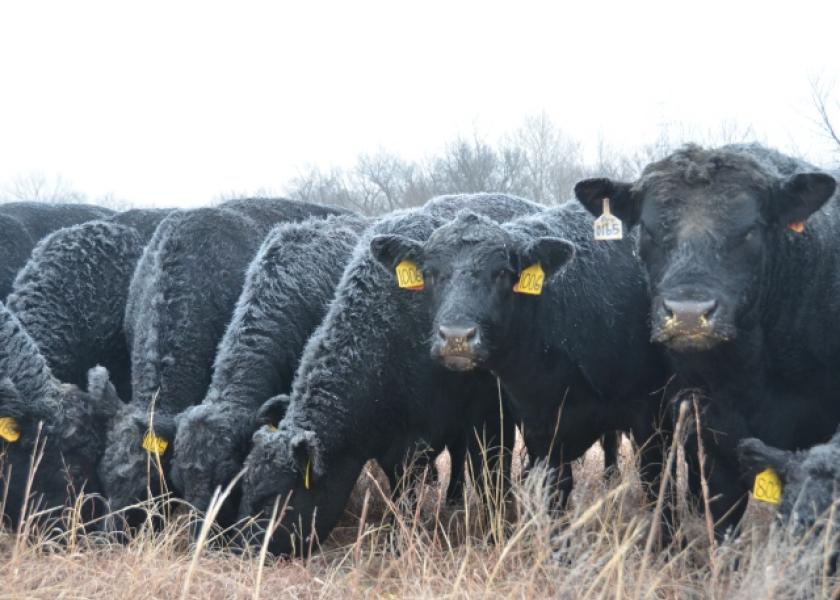Sexten: Is Genetic Testing a Superpower?

We all have our favorite childhood superhero, each with some unique superpower. In addition to strength, speed, flight, magic or fire, our hero also likely had some equally unique weakness exploited by another hero or villain.
As a producer, while strength and speed are useful as ranch superpowers, their utility is really limited to certain situations around the operation we hope to avoid like flat tires and cows missing the gate. The ability to see the future would be hard to beat as an all-around superpower for most ranches, feedlots and many market commentators. While writing this article, the August 2024 feeder market advanced over $280 CWT, and if you saw that move—perhaps you already have superpowers.
There are few market aspects we foresee with certainty; marketing isn’t called risk management for nothing. Rather than wondering how long this market will last or when will it turn south, let’s consider opportunities to capitalize today and be prepared for tougher times when they come.
Genetic evaluation is a very real tool we have available today to see the future productivity of the cow herd. Thousands of bulls are evaluated every fall and spring using this technology to determine value differences associated with a sire’s genetic potential. We use expected progeny differences (EPDs) to communicate predictions of a bull’s calves relative to another sire when mated to similar cows.
Most commercial operations when evaluating prospective sires focus first on birth weight and weaning weight followed by yearling performance and finally, carcass merit. It’s a logical process— get a live calf that can grow rapidly to weaning then prioritize postweaning and carcass performance. Few commercial cattle operations would imagine purchasing their next herd sire without the ability to compare his prospective calves’ likely birthweights to other candidate sires without any genetic information.
The ability to predict the future in the next generation of females is an oft overlooked superpower genetic testing technology also affords us today. Most operations instead turn out extra replacement heifers, deferring income and incurring development costs using birthdate as the primary indicator of future reproductive success.
Genetic testing technology exists today to help select for improved reproductive and production efficiency in the next generation of the cow herd. With beef cow inventory at historic lows, using this as a tool to improve your replacement selection process offers an opportunity to sell more heifer calves this fall and build a herd with lower replacement rates for years to come.
A recent article in the Journal of Dairy Science evaluated the impact of using genomic selection on the productivity of dairy cows. Fiona Louise Guinan and co-workers[1] evaluated the genetic trends of the five major dairy breeds since genomic testing was implemented into the genetic evaluation in 2009.
Not surprising, genetic potential for milk yield, fat and protein all continued to increase in cows and sires with the addition of genomic testing. The researchers highlighted the rate of change in Holstein sires from 2000 to 2008 compared to the post-genomics era from 2009 to 2017. The rate of change in predicted breeding values increased in milk production by 79%, 152% in milk fat, and 192% in milk protein. This data suggests genomic insights may combine the superpowers of speed and future vision to make genetic improvement.
Commercial beef operations often suggest the production environment limits the cow’s ability to express enhancements in genetic merit. In addition, many operations suggest selection for increased performance or carcass traits are antagonistic to improving upon lowly heritable reproductive traits. While dairy cows are seldom restricted by their environment, this research group evaluated several functional and reproductive traits antagonistic to increased milk production.
During the genomic era, the genetic trend for somatic cell scores decreased (favorable), while milk production increased as well as cow’s udder health. Similarly, cow productive life and cow livability, two measures of cow longevity, steadily improved after the implementation of genomics into the evaluation. Finally, daughter pregnancy rate has changed from a steady decline prior to genomics to flat after their introduction in 2009. So, while daughter fertility has not improved, it remains flat while cows are increasingly more productive and healthier.
The dairy industry has demonstrated the ability to improve cow productivity and enhance health—without sacrificing reproduction. Why does the beef industry limit our genetic selection tools to sires when a beef cow remains in the herd twice as long as a dairy cow?
If you want to prepare for a downturn in the cattle market, realize this year’s replacement heifers are likely the most expensive replacements in history, and make sure you use every tool available to keep the best ones. Will 2023 be the year you start documenting the impact genomic selection had on your herd’s genetic trend?
[1] https://doi.org/10.3168/jds.2022-22205







